31 Days, 31 Lists: 2021 Informational Fiction

Over the years, I’ve called these books a lot of things. “Fictionalized Nonfiction” was one of my preferred titles for a while. Since then, it was Melissa Sweet that directed me to a new term entirely: Informational Fiction. The premise is simple. Today, I will list books that dare to mix nonfiction with fictional elements in a truly enjoyable way. I don’t know that I’d call any of these books strictly factual by themselves. Yet one of the true allures of writing is how fiction can elevate truth, even strengthen it. And does that deserve some kind of aplomb? So before we plunge entirely into the next round of list titles (nonfiction is nigh!) let us first celebrate those kooky books that are willing to take a chance with a little imagination. It ain’t all true, but it certainly ain’t all false.
2021 Informational Fiction for Younger Readers
Areli Is a Dreamer: A True Story by Areli Morales, a DACA Recipient by Areli Morales, ill. Luisa Uribe

The trickiest titles I read are the ones that say straight out that they’re nonfiction, but pull from a number of different fictional techniques. Take Areli Is a Dreamer. It’s a rare bit of autobiographical picture booking, which is a good thing. We always need more of these. I know I’m not the only librarian stumped when a seven-year-old comes to the desk asking for reading level appropriate autobiographies. The tricky part comes via my old nemesis: Fake dialogue. You could argue that since this is a memoir that the dialogue is as Areli herself remembers it. Perhaps, and certainly there are some adult memoirs out there that do the same, but the specificity of this dialogue is definitely tipping this into the Informational Fiction category, and there is nothing wrong with that. What Ms. Morales has written here is a stirring and sadly timely tale. In 2020 we saw a judge rule that new DACA applications could not be processed, and at that time I was reading this book. Looks like we need it now, more than ever.
ADVERTISEMENT
ADVERTISEMENT
Boardwalk Babies by Marissa Moss, ill. April Chu

I first heard the story of the Boardwalk Babies on the Stuff You Missed in History Class podcast. The episode was called Doctor Couney’s Baby Sideshow and it was just one of those quintessential American stories you hit upon occasionally. Here you have a man who could probably be called the P.T. Barnum of baby saving. Premature babies were dying, and no one knew what to do to save them. It wasn’t until Couney started exhibiting the babies in incubators, not dissimilar to the ones used with chickens, that people started to take notice. It was exploitive but for the very good cause of saving lives. Moss hits on the highlights (and weirdnesses) of the exhibit and April Chu really brings the whole enterprise to life. There’s a load of fake dialogue in it, so I can’t put it strictly in the nonfiction categories (which is a pity) but for the story alone it’s worth a glance.
A Boy Named Isamu: A Story of Isamu Noguchi by James Yang

This book is a pretty good example of how the line between fact and fiction can get so very blurry once in a while. Yang’s first sentence in this book is “If you are a boy named Isamu…” And from there on in you hear what “you” do in the course of a single day. The trick is that Yang goes into “your”, which is to say Isamu’s, head and says what’s being thought at any given moment. And that choice is a clever way to get the young reader to empathize with this young artist. To show the seeds of his later accomplishments growing early on. Because it is an artistic narrative technique then, I dub this an official candidate for the term “Informational Fiction”. There is information in here but also a fictional frame propping the whole thing up. Inventive and interesting.
Brains: Not Just a Zombie Snack by Stacy McAnulty, ill. Matthew Rivera

I’ve said it before and I’ll say it again: Unreliable narrators are picture book gold. Even better if the narrator is trying desperately NOT to be unreliable. Stacy McAnulty is rapidly making a name for herself with fun nonfiction titles for younger kids. In this case, a hungry but (relatively) restrained zombie cook explains precisely why human brains are so remarkable (and delicious). Deftly weaving facts between the zombie’s drool we learn about the smooth brains of some creatures, which parts of the brain exist (and account for our intelligence), how much they weigh, neural pathways and much more. I was actually very impressed with how well the book plays with its topic and conveys its facts. Perfect for a nonfiction storytime, or for adding to a Halloween one where you’d love to work in some facts.
Burt the Beetle Doesn’t Bite by Ashley Spires
[Previously Seen on the Easy Books & Early Chapter Books List]

Burt’s just your average ten-lined june beetle and there’s very little that’s interesting about him. Yet even the most average bug can be a hero if it uses what it’s got. And what Burt has are … hugs! I had this book all wrong. When it was first sent to me, I think I tried to tackle it like a work of nonfiction. And sure, there are plenty of fun facts spotted throughout the text. But the long and short of the matter is that this book is more story than expository text. And look at Burt. Isn’t he cute? Loved the set-up, the characterizations, and the fact that a sweety beetle can be a hero. Best line ever: “I have foiled you with my warm embrace.”
Charles’s Bridge by Sandra Novacek, ill. Nicole Lapointe

1938 Czechosolvakia doesn’t crop up in all that many picture books, but this is one of the exceptions. Charles and his family are fleeing approaching armies, but because of that he cannot take his paint supplies. Relocated to Náměšť nad Oslavou, Charles falls in love with a particular bridge, dotted with statues. Inspired, he crafts his own art supplies and finds a way to capture the image no matter what may come. The book is based on the life of the author’s husband, and there’s a touching Author’s Note in the back about how he lost the original painting years ago but was able to recreate it for an exhibit of his work. Illustrator Nicole Lapointe, subtly starts the book in sepia tones then slowly introduces additional colors and hues as Charles figures out how to create his art. Due to the extensive dialogue, I’d place this in the picture book rather than biography section, but the writing is an excellent encapsulation of a difficult time and the individual sacrifices it wrought.
The Christmas Mitzvah by Jef Gottesfeld, ill. Michelle Larentia Agatha
[Previously Seen on the Holiday List]

I can’t be the only one who read this title and felt the hackles rise on the back of her neck. I get really suspicious around children’s picture books where Hanukkah turned into a kind of Jewish Christmas on the page. They’re two entirely different holidays, but too often you’ll see them conflated in some way. And I can tell you straight out that my mind was not put at rest when I read, “Al Rosen was a Jewish man who loved Christmas.” I was a bit relieved, though, to see the next line, “It wasn’t his holiday.” What follows is based on a true story about the real Al Rosen. Back in 1969 he was so moved by a man’s story that he’d have to miss Christmas Eve with his family due to work that Al decided to help out. So he called a radio station and announced that he would be happy to do the job of anyone who was forced to work on Christmas Eve. In this book, Al takes on a wide variety of jobs over the years, helping people out. It’s a simple but very fun concept, and I appreciated Gottesfeld’s storytelinng prowess. Don’t know if I should catalog this as a Jewish classic or a Christmas one. The important thing, is that you own one. Stat.
Etty Darwin and the Four Pebble Problem by Lauren Soloy

Inquisitive children are difficult creatures to write about. There’s such a thin line between curious and cloying. Between honest questioning and coming across as annoying. I think Soloy does a super job of walking that line. Based on the conversations between Etty and Charles Darwin, the book shows a healthy father-daughter relationship built on scientific investigation. There is also, I should mention, a truly stunning two-page spread of a fox’s face that should be placed in the annals of surprise picture book spreads. Soloy does a tip top job of saying this book is fiction in the back, but there’s enough real info here to teach, even as it intrigues.
Kafka and the Doll by Larissa Theule, ill. Rebecca Green

A strange sweet tale based on a true story. According to Kafka’s last love, Dora Diamant, in 1923 the two ran into a little girl who was crying because she lost her doll. Touched, Kafka crafted meticulous letters from the doll in question, recounting her many adventures and travels. He would die shortly thereafter. In this book, Theule reimagines the situation, giving the doll a wider range to explore, and unlike the real letters, these end with the doll scaling mountains, inspiring the little girl to do the same. The book’s ending is semisweet, with Kafka dying but the girl going on to adventure. As the final line reads, “Their warm breath clung fiercely to the cool air, then blew softly away, one to play and explore and one, finally, to sleep.” It’s funny the degree to which this feels like a translation. We don’t expect our American books to be quite as candid about death, or as introspective about the power our words have long after our own . The tone of this book, perfectly complemented by Green’s art, has a dreamlike feel that some child, somewhere, will remember for all time.
My Pet Goldfish by Catherine Rayner

I can always count on Catherine Rayner. To date, not a single book of hers has ever let me down. Now earlier this year there was a small kerfuffle because the wordless picture book Midnight Fair included at its end a moment when a young wolf lets his goldfish prize go into the wild. Someone said that this encouraged releasing pets into the wild and that it should be discouraged. My Pet Goldfish sort of makes it clear to me that that released goldfish is probably gonna get eaten or die of exposure. This book, in contrast, releases goldfish into a very small pond in a person’s yard. In this story, our heroine gets a goldfish and names him Richard (you gotta love the English). As we read about Richard and how surprisingly smart he is, the book is peppered in the margins with cool goldfish facts. Eventually, it becomes clear that Richard is going to grow too large for his bowl. If he lives in the pond he might be able to grow for a longer amount of time (“The oldest ever goldfish was forty-three years old”). Rayner’s art is perfect for this kind of story too. Who else but she could capture dappled light through water and the shine of a goldfish’s scales in the sun? Just gorgeous AND informative!
Napoleon Vs. The Bunnies by J.F. Fox, ill. Anna Kwan

Okay, I’m afraid there is nothing I can write here that even begins to compare to this line from the Kirkus review of this book: “Shh! Be vewy, vewy quiet; we’re hunting pwimary sources!” I can actually identify the writer of that review from that line, and I’m suffering some serious review-envy over here. And I have to credit that same reviewer with pointing out that there’s not a heckuva lot of evidence to support the accuracy of this tale. We would all love for Napoleon to have once been chased by overly affectionate rabbits, but sourcing that story is iffy at best. That’s why I’m plopping this book into the Informational Fiction list. There is a lot of stuff about Napoleon that is true, after all. The backmatter is particularly fun and, I was relieved to see, mentions that the man had a LOT of problems as well. If you want a book that covers Napoleon for younger readers (older readers can read Nathan Hale’s Blades of Freedom) this is where you should go.
189 Canaries by Dieter Böge, ill. Elsa Klever, translated by Laura Watkinson
[Previously Seen on the Translation List]

The canary in the coal mine has its day in the sun. In the nineteenth-century, people all over the world were just crazy for canaries. Specifically canaries from the Harz Mountains, where they would learn rolling trills. The story of one “Harz Roller” canary plays out on the pages of this book. After living amongst the silver miners that would breed canaries for extra cash, our hero is taken by a bird dealer alongside 188 other birds. Together the birds, each in their own little traveling cage, fastened to the dealer’s back, travel not simply across Germany but across the ocean to America. There the little canary finds a new home. One already inhabited by a bird that sings exactly the same way that it does! Artist Anne Vasko imbues this book with finely detailed drawings filled with rich, lush colors. The canary is never anthropomorphized, which aids the tale’s nonfiction element. Honestly, this is practically a nonfiction text. The only thing that prevents it from ending up in your 500s is the fact that Böge has wrapped a story around the proceedings. This is a subtle charmer and a real window into a part of our history we simply never knew before.
Osnat and Her Dove: The True Story of the World’s First Female Rabbi by Sigal Samuel, ill. Vali Mintzi
[Previously Seen on the Folk, Fairy, and Religious Tales List]

Almost five hundred years ago, Osnat defied tradition and became the world’s first female rabbi. This beautifully illustrated book mixes fact with surreal folk tale touches when telling her story. The “True Story” claim made on the cover is unfortunate but not a game changer for me. And after reading it, I came to the conclusion that the Religious Tales section of this list is where this book truly belongs. I was quite fond of both the art and the storytelling. It’s a colorful and original method of telling a tale with the story set in the 1600s and facts are hard to come by. Stick around for the Author’s Note, which is almost as fascinating as the book itself. There you get to read some of the Osnat stories that Sigal Samuel had to leave out. Altogether, a worthy inclusion. It would pair well with Bruchac’s A Peacemaker for Warring Nations, actually.
Spin a Scarf of Sunshine by Dawn Casey and illustrated by Stila Lim

As the seasons change, Nari and her parents shear her sheep’s fleece, and spin and dye the wool. Nari knits the yarn into a cozy yellow scarf. But as Nari grows older, her beloved scarf becomes tattered. It’s time to recycle the wool into compost, with a little help from the worms. Love it. My mom’s a bit of a fiber artist, and I can attest that Stila Lim took pains to keep this book accurate from start to finish. I might have a tiny quibble that you don’t brush the wool, you card it, and how the heck could you spin a sweater’s worth of wool on a drop spindle? But those are tiny concerns. What really impressed me (aside from the writing itself, which I thought did a stellar job) was the dad’s shearing. We always see sheep sheared in books in pieces. A good shearing gets the wool off in one big piece, like you see in this tale. Impressive and cool and I just about love it.
The Traveling Camera: Lewis Hine and the Fight to End Child Labor by Alexandra S.D. Hinrichs, ill. Michael Garland

Books can talk about their subjects in a variety of different ways. When you choose to tell someone’s tale in the first person, however, it gets really tricky. Ostensibly a picture book biography, this title, unfortunately, relies on this method of conveying information. Once you get over that stumbling block, however, you find yourself in a wise and clever story about Lewis Hine the myriad methods he had of revealing child laborers. With his great big honking camera, the man found ways to take photos of children in mines or factories or in the fields. Michael Garland’s accompanying images are perfectly paired too, which is grand. I loved how the book began with a photo of the real Hine and then you see Garland’s drawn version, practically identical. When you get to the end, the drawn people are gawking over Hine’s real photos. Hinrichs also cleverly shows how Hine wasn’t just showing the bad, but also the good spirit of these kids. Ample backmatter dives even deeper. While it can be difficult to find fault with Hine, the book nevertheless does mention in the backmatter how he was still a product of his times in terms of gender and race. Even so, he comes out looking far better than most of his contemporaries. There’s even a Time Line at the end! A Time Line! Great good stuff.
Violet Velvet Mittens with Everything: The Fabulous Life of Diana Vreeland by Deborah Blumenthal, ill. Rachel Katstaller

Lord. May we all be so lucky as to receive posthumous picture book bios that glorify our lives in the same way that Ms. Blumenthal has glorified Diana Vreeland. This book reads a little like those Margaret Wise Brown bios that keep cropping up, and bit like the film Amelie. In it, we learn about Diana Vreeland. Told repeatedly by her mother that she wasn’t much to look at, Diana strode out into the world to make beauty in other ways. The writing of the book is part of its charm, but as it is in the first person we’re going to have to slot it into the Informational Fiction category. Part of Blumenthal’s difficulty here is that Vreeland herself concocted fabulous tall tales about herself. I imagine that separating out the fact from the fiction would take quite a while. Happily, this book does what the best picture book bios do: It makes the subject inviting while offering a path for young readers on how they might live their own lives. One of the more charming books of the year.
Watercress by Andrea Wang, ill. Jason Chin
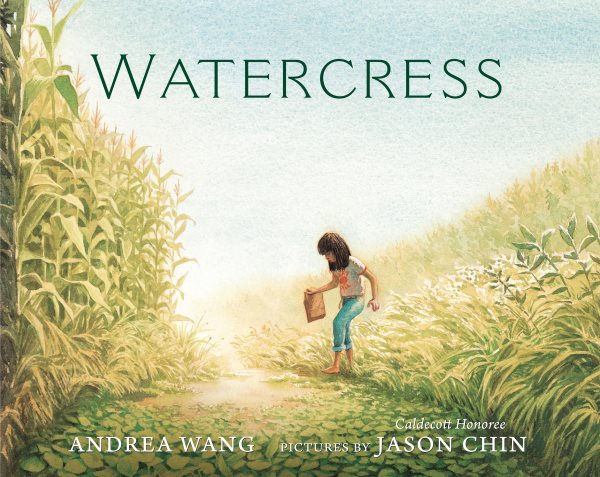
ADVERTISEMENT
ADVERTISEMENT
A girl wonders why her family is foraging for watercress in the ditches along the road. Can’t they get their food in the grocery store? A richly textured and emotional tale of immigration and understanding. Oh my. What a beauty. Jason Chin just doesn’t illustrate a single bad book, does he? This one reminded me more than a little of A Different Pond, illustrated by Thi Bui, written by Bao Phi, or last year’s The Most Beautiful Thing by Kao Kalia Yang, illustrated by Khoa Le. Wang’s the same author who brought us that fantastic Magic Ramen book two years ago, so you know she’s a great author to begin with. She’s essentially told her own story as an immigrant kid in the 70s/80s, embarrassed to be foraging for watercress in the ditches beside the road. Chin just imbues the whole story with light. And that two-page shot of the family during the famine in China? It just rips the heart out of your chest. One of the best picture books I’ve ever read about the immigrant experience in America.
2021 Informational Fiction for Older Readers
Bruno the Beekeeper: A Honey Primer by Aneta Františka Holasová, translated by Andrew Lass
[Previously Seen on the Translation List]

Think you know how honey is made? Think again. Everything from drones and queens to the logistics of extractors is explained in this loving ode to sweet sweet honey. Just your average Czech import about the meticulous inner workings of beekeeping. That’s all. You know what this really is? It’s 2021’s version of last year’s Bear Goes Sugaring. Only instead of learning the details of making maple syrup, this book shows you almost everything you need to know about beekeeping. Seriously, I feel like we were this close to hearing what size frames you should be using for your hives. The text feels a bit dense at the start but once you get into it it really flows. It’s too sweet to miss (I’ll see myself out).
Jop and Blip Wanna Know: Can You Hear a Penguin Fart on Mars and Other Excellent Questions by Jim Benton

Just because a question is silly doesn’t mean you shouldn’t ask it. Join two intrepid robots as they give strangely straightforward answers to some seriously ridiculous queries. After much long and studied consideration, I thought maybe this could be the only category where this book makes sense. Sure, we could put it in the graphic novel section, but I think it would just get lost there. I don’t always like Jim Benton’s books (Catwad left me cold) but the jokes seriously land in this one. Aside from the science itself being pretty good, I liked the running gags. If we’re looking for something silly that has a bit more of a science-y edge to it, this might be an ideal inclusion. Kind of like XKCD’s books like What If, but for kids.
Tell No Tales: Pirates of the Southern Seas by Sam Maggs, ill. Kendra Wells

Join Captain Anne Bonny and her swashbuckling crew as they duke it out with the terrible Woodes Rogers who’s almost more ghost than man. Foof! You can always tell when a comic is written by a history buff. Sam Maggs (who has a name worth of piracy right there) packs this puppy chock full of more pirate facts than you would imagine, and has the backmatter to combat any queries. A very LGBTQIA+ positive retelling of the adventures of Anne Bonny and Mary Read. And yes, I admit it. I learned a lot. The info about Queen Nanny and the Windward Maroons of Jamaica should inspire a wholly different book right there. Swashbuckling, fun, plenty of jokes, and BIPOC historical representation. What’s not to love?
Curious about other books that mix their fact and fiction together? Then check out some previous years’ lists:
And here’s what else we have happening this month:
December 1 – Great Board Books
December 2 – Board Book Reprints & Adaptations
December 3 – Transcendent Holiday Picture Books
December 4 – Picture Book Readalouds
December 5 – Rhyming Picture Books
December 6 – Funny Picture Books
December 7 – CaldeNotts
December 8 – Picture Book Reprints
December 9 – Math Books for Kids
December 10 – Books with a Message
December 11 – Fabulous Photography
December 12 – Wordless Picture Books
December 13 – Translated Titles
December 14 – Fairy Tales / Folktales / Religious Tales
December 15 – Unconventional Children’s Books
December 16 – Middle Grade Novels
December 17 – Poetry Books
December 18 – Easy Books & Early Chapter Books
December 19 – Older Funny Books
December 20 – Science Fiction Books
December 21 – Fantasy Books
December 22 – Informational Fiction
December 23 – American History
December 24 – Science & Nature Books
December 25 – Autobiographies *NEW TOPIC!*
December 26 – Biographies
December 27 – Nonfiction Books for Older Readers
December 28 – Nonfiction Picture Books
December 29 – Best Audiobooks for Kids
December 30 – Comics & Graphic Novels
December 31 – Picture Books
Filed under: 31 Days 31 Lists, Best Books, Best Books of 2010, Best Books of 2021, Booklists
About Betsy Bird
Betsy Bird is currently the Collection Development Manager of the Evanston Public Library system and a former Materials Specialist for New York Public Library. She has served on Newbery, written for Horn Book, and has done other lovely little things that she'd love to tell you about but that she's sure you'd find more interesting to hear of in person. Her opinions are her own and do not reflect those of EPL, SLJ, or any of the other acronyms you might be able to name. Follow her on Twitter: @fuseeight.
ADVERTISEMENT
ADVERTISEMENT
SLJ Blog Network
Tegan and Sara: Crush | Review
The Seven Bills That Will Safeguard the Future of School Librarianship
Take Five: Dogs in Middle Grade Novels
Gayle Forman Visits The Yarn!
ADVERTISEMENT



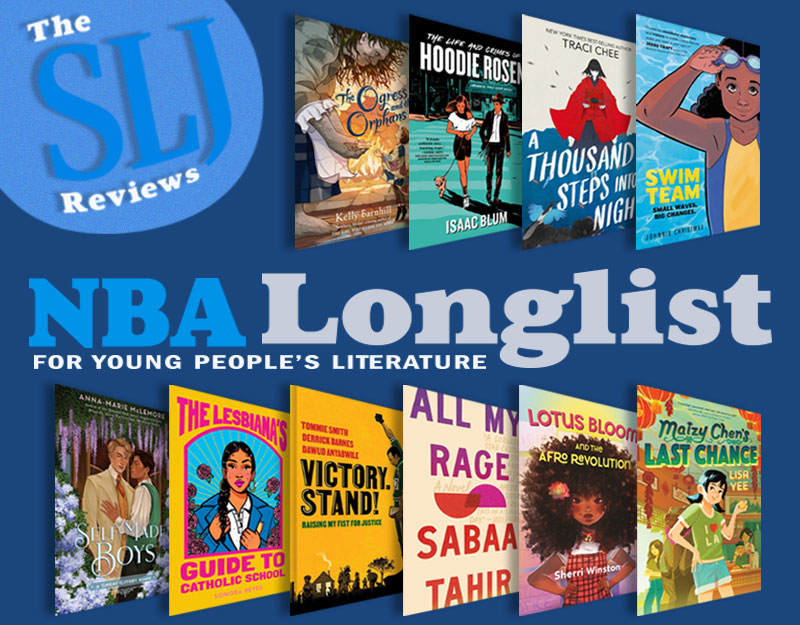
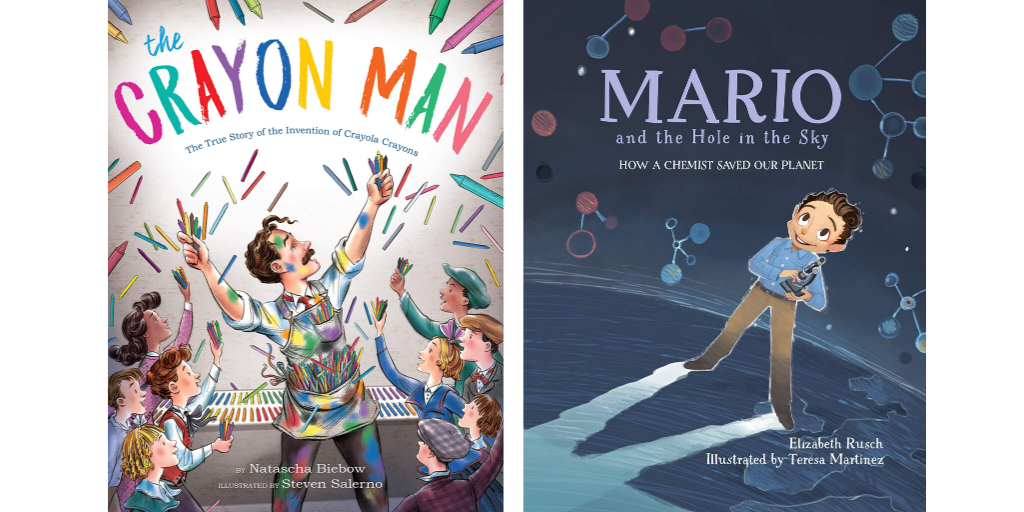
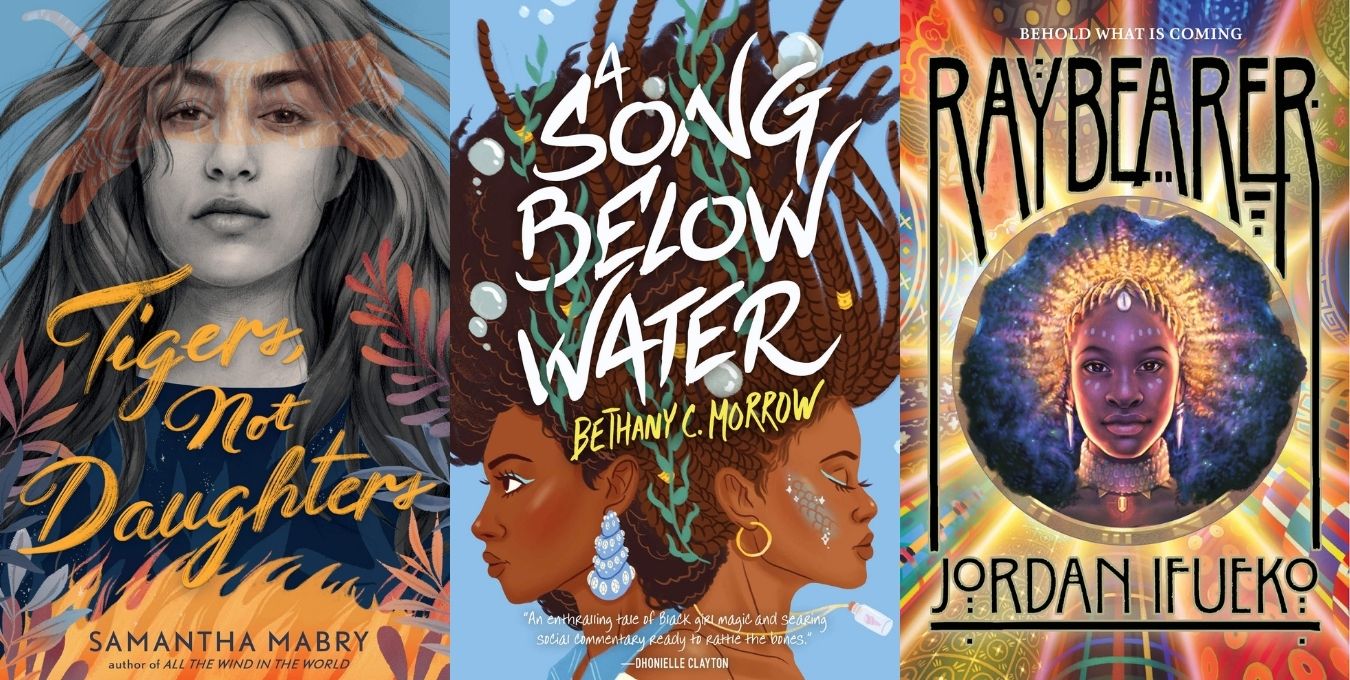
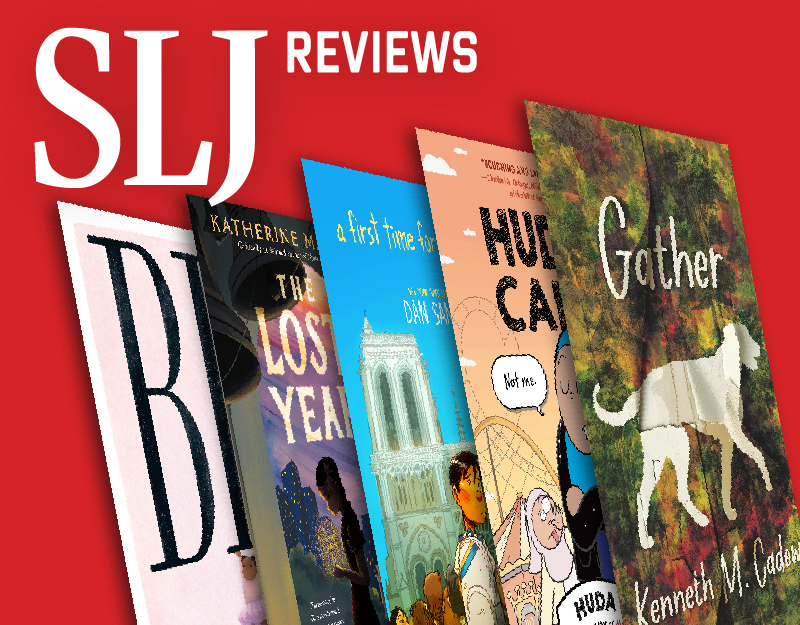
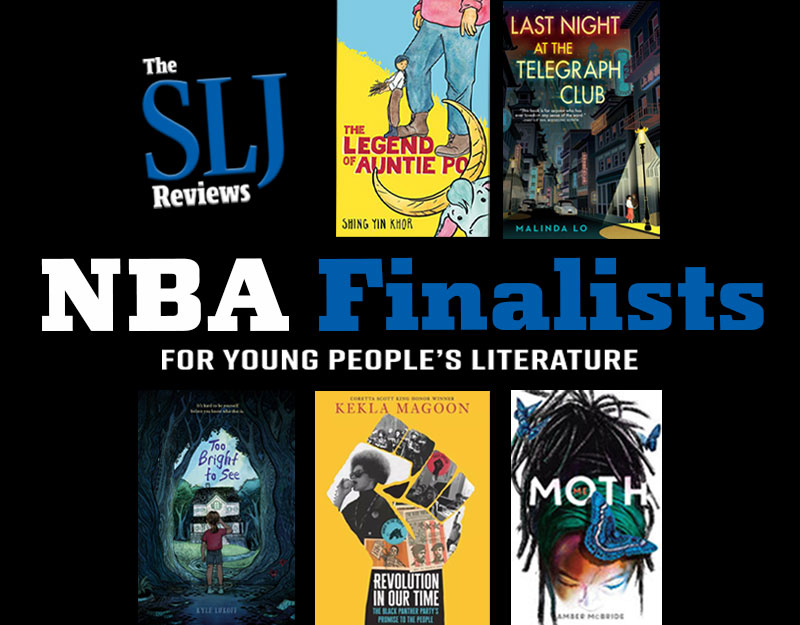
So… where do you shelve these? Do they all go in fiction (either picture books or otherwise)? I have been struggling with this in my school library regarding a number of books.
Ahhhhhh. And therein lies the rub. No idea. Some of these I’d strictly put in Picture Books. Some are comics, so that’s easy. But some are so very tricky. An autobiography can usually contain faux dialogue and be considered legit because it comes from the subject’s experience. But what about a work of Nonfiction with clear Fictional flourishes? Where do you put Boardwalk Babies? It’s own section? It’s a puzzler and I’m afraid my usual instinct is to see what other libraries have done.
I prefer to keep facts and fiction as separate as possible. I believe many of the problems plaguing our world today come from an inability to distinguish between the two.